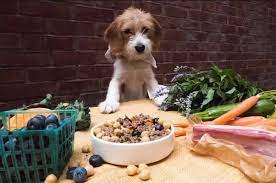
It is not surprising that pet parents get overwhelmed with the information out there regarding raw pet feeding. This can be a bit overwhelming, considering all the information out there. However, with the right guide, anyone can successfully put their pet on the raw diet journey.
Safety of Raw Feeding
Before you even look into the possibility and how-to of raw feeding, you want to be sure that it is safe for your dogs. Fortunately, with years of research backing the need to embrace raw pet diets, you can be sure that this is the perfect diet for your dogs.
Switching to raw diets boosts your dog’s immunity and ensures that it gets all the relevant nutrients it needs. This also helps promote brain functioning and boosts energy levels. In addition, the fact that you can mix the raw food options is a plus. Consider including organ meats, chicken, pork, beef, seafood, and other healthy meats.
The Actual Feeding
Once you have a variety of raw food options, calculate the exact amount your dog needs depending on its growth stage. Note that puppies, adult dogs, pregnant and lactating dogs, and seniors need different food amounts and portions. It is also important to know which raw foods to feed specific dog breeds based on their sizes.
Small Dog Breeds
This category of dog breeds is said to be 15lbs or less. They include the chihuahuas, Maltese, and pugs, to mention a few. Generally known as toy dogs, these breeds require at least 8 ounces of food daily. Make sure to split the amount into 3 to 6 meals, with an average of 4 times being recommended for effective feeding.
Feeding small adult breeds
You may need to feed the adult small breeds differently, considering their energy and activity are much more than the puppies. Five ounces of food a day, spread between 2 to 3 meals, is recommended.
Feeding Small Pregnant Breeds
The dietary needs change to support the new growing puppy in the mothers. It would be best if you made adjustments and modifications depending on the stage of the pregnancy. Maintain a similar feeding routine until the third trimester, when milk production begins and the demands increase. This may mean increasing the amount of raw food you serve.
Feeding senior small dog breeds
Senior dogs are challenging to feed, especially if they have injuries, joint pains, or are on a poor diet. Gauge what works for them and adjust the food based on their physical activities. If the dog has no issues, consider feeding two percent of its body weight.
Feeding Medium Breed Dogs
Like the small breed, you also need to consider the different aspects. Puppies need more food spread out in different feeding sessions. Adults will need a little less depending on their physical activities and weight. There are specific differences you need to know when feeding pregnant and lactating dogs and seniors. The bottom line is to learn what works.
Since this may be a lot of information to understand, consider getting appropriate raw foods from Houston Raw Pet Food. Get the right raw food for your dog regardless of its breed, size, and state.



